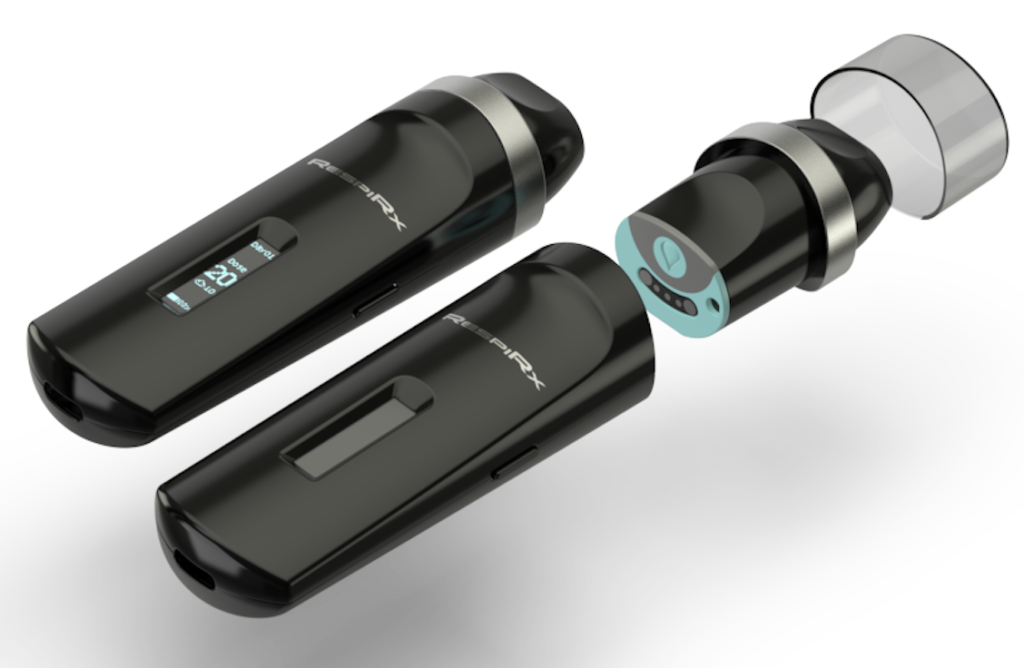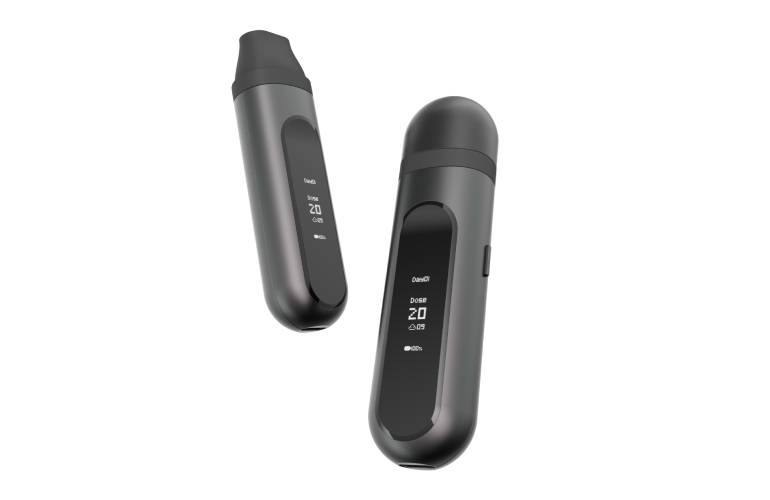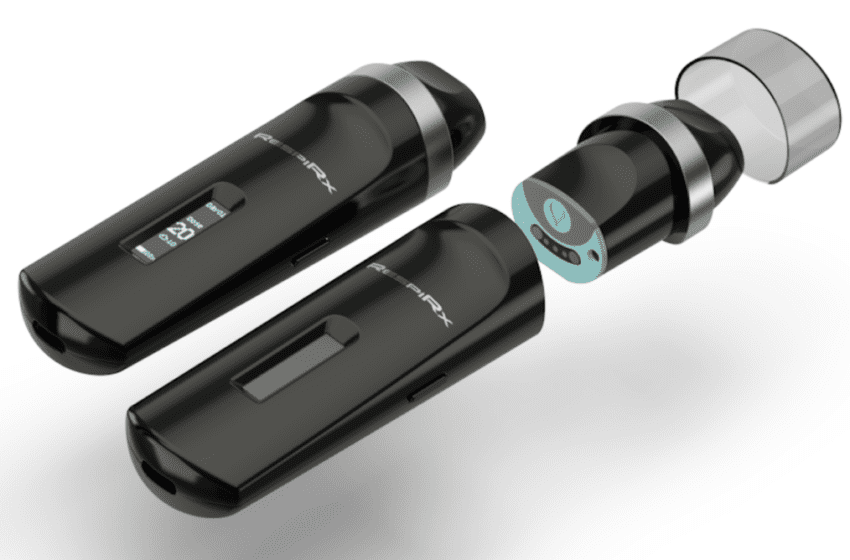
The RespiRx, the first inhalable nicotine-replacement therapy, gains IND clearance.
By VV staff
A Virginia-based pharmaceutical company is developing inhaled therapeutics across a variety of indication areas leveraging its proprietary inhaled drug delivery platform. Qnovia announced that its RespiRxNicotine Inhaler (QN-01) received clearance for its Investigational New Drug (IND) application by the U.S. Food and Drug Administration.
The company will initiate a Phase 1, randomized, crossover, open-label trial in the U.S. to determine the pharmacokinetics, safety and tolerability following self-administration of nicotine-containing products in up to 24 healthy adult subjects who currently smoke combustible cigarettes, according to Brian Quigley, CEO of Qnovia.
“The FDA clearance of our IND application for QN-01 marks a significant achievement for Qnovia as we transition to a clinical-stage therapeutics company. Our U.S. clinical development plan is derisked by the positive first-in-human data we generated last year in support of advancing QN-01 in the United Kingdom where we demonstrated pulmonary delivery and a superior pharmacokinetic profile for the RespiRx when compared to existing nicotine-replacement therapies [NRTs],” said Quigley. “The next step for our U.S. program is to initiate a randomized Phase 1 trial that evaluates QN-01 compared to the Nicotrol Inhaler and combustible cigarettes in a head-to-head comparison.
“We remain on track to dose our first patient in the fourth quarter of 2024 and in parallel will be advancing to a pivotal clinical trial in the U.K. to support an MAA submission to the MHRA [Medicines and Healthcare products Regulatory Agency] in 2026.”
Qnovia’s proprietary drug/device combination already demonstrated dose-dependent pharmacokinetics, pulmonary delivery and was well tolerated in a first-in-human study conducted to support advancing QN-01 in the U.K., according to Mitch Zeller, the former director of the FDA’s Center for Tobacco Products, who is now serving as Qnovia’s policy and regulatory strategy advisor.
“There have been no treatment options for smoking cessation approved in the U.S. in over 20 years. As a result, attempting to quit ‘cold turkey’ remains the most popular method of quitting smoking,” said Zeller. “There is an extraordinary public health need for truly innovative products to help health-concerned smokers stop using cigarettes. Any effort to reduce the death and disease caused by tobacco use must include new and better tools in the treatment toolkit.”
Qnovia’s goal is for RespiRx to be the first inhaled prescription smoking cessation therapy product, Quigley told Vapor Voice last year (“Licensed to Thrive,” Issue 1, 2023, page ?). Instead of using heat to create vapor, the RespiRx device uses an orientation-agnostic vibrating mesh nebulizer. The aerosolizing engine is nothing like a traditional e-cigarette that heats a coil to atomize nicotine based in PG and/or VG.
RespiRx is activated when a user inhales on the device. To aerosolize the nicotine, it sends an electrical current that causes the perforated piezo mesh to vibrate more than 100,000 times a second. “It’s that vibrating action of the mesh that then forces the liquid to the holes, creating an aerosol that appears vapor-like, allowing it to be inhaled,” says Quigley. That, he says, is fundamentally different from a traditional e-cigarette product, where the heating process can create undesired thermal by-products.
RespiRx uses proprietary software to deliver a precise dose of nicotine. Every time it’s activated, the device fires for three seconds and delivers a targeted dose of the drug. The base is reusable and serves as the housing for the battery and software. The RespiRx nebulizer sits within the pod that houses the nicotine drug product.

“The nebulizing unit (cartridge) gets replaced by the patient every one [day] to two days. That interface means that the patient doesn’t have to clean the nebulizer,” explains Quigley. “The biggest challenge with other vibrating mesh products is that they require cleaning if used over an extended period. We’re mitigating that through the design of the interface. There is no cleaning required. We do believe that this will result in RespiRx having a very long use life.”
Mario Danek, Qnovia’s founder and chief technical officer, agrees that eliminating the cleaning requirement was a priority. “The idea was to create a technology that emulates the form factor of a successful high-adoption consumer product but that is imbued with technologies that would pass CDER’s [Center for Drug Evaluation and Research] stringent standard for safety—combined with Qnovia’s purposeful design features, it should bring patient adherence and quit rates to new highs, which historically have been found lacking in NRT,” he said. “Additionally, from a drug delivery platform perspective, those CDER-aligned device safety requirements are just as imperative to Qnovia’s API expansion strategy into other indication areas.”
RespiRx is a “step-down” therapy, like many NRT products. However, instead of buying different pods with varying levels of nicotine, Qnovia’s device has a dosage-monitoring system programmed into the device. Uniquely, the use regimen is determined based on how much a smoker is smoking, said Quigley. For example, a one-pack-a-day smoker would start with 20 doses per day. The two-pack-a-day smoker would start with 40 doses per day.
“Then the device will, over the 12 weeks, gradually reduce the available number of doses to that patient. It is a much more manageable step-down over the 12 weeks, unlike currently available cessation methods. And the device itself will prevent the patient from using more than they’re supposed to use,” said Quigley. “Patients would also have the on-device LCD screen interface to help them understand how to use their doses. That, too, is another benefit of our product versus the existing smoking cessation therapies.”
Danek said the company is proud to lead the charge in encouraging the innovation and development of safe and effective pharmacotherapies to help the millions of smokers who are trying to quit smoking.
“We believe our proprietary drug delivery platform has the potential to be a highly differentiated treatment option not only for treatment of nicotine dependence but for a wide variety of treatments that would benefit from inhaled drug delivery,” said Danek.

